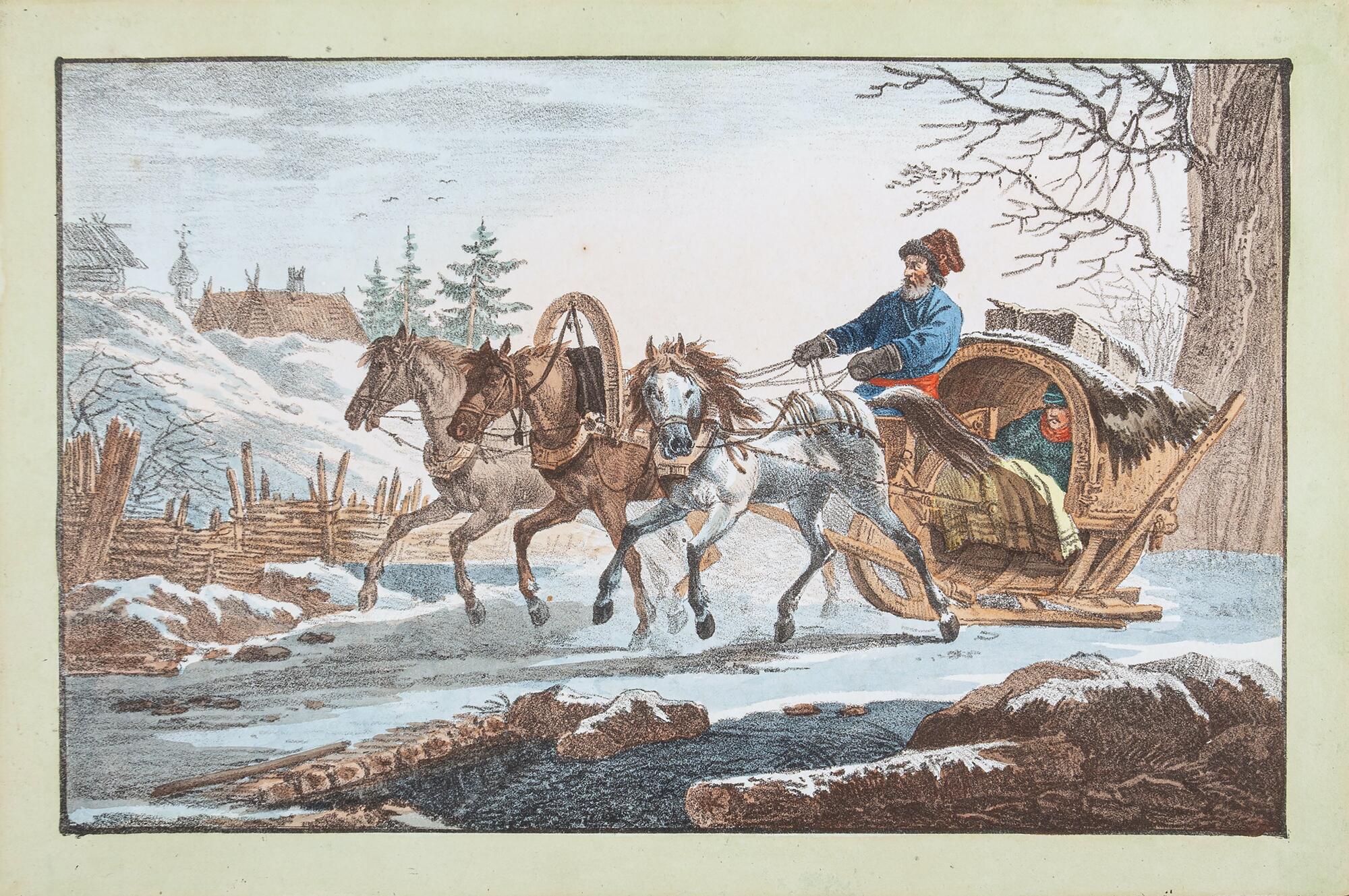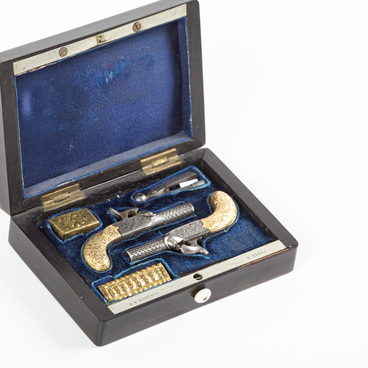The variety of ways to travel across the vast expanses of Russia became a subject of interest for Western European artists in the second half of the 18th century. Numerous engravings featured in albums and atlases as a supplement to books of foreign travelers showed not only the carriages or sleighs familiar to every European, but also outlandish original carts. Such engravings were made by Jean-Baptiste Le Prince (1734–1781), Michel François Damame-Demartrais (1763–1827), John Atkinson (1775–1830) and other artists.
In Russia, the theme of traditional Russian culture became popular only in the early 19th century, largely thanks to the Polish-born artist Alexander Osipovich Orlovsky (1777–1832). His drawings became especially fashionable among the public and were made into lithographs by the artist himself or copied by other artists. In the 1820s, the St. Petersburg publisher Alexander Ivanovich Plyushar created a series of albums based on Orlovsky’s drawings. Talented artists who became pioneers of Russian lithographic art and excelled in this type of printed graphics were involved in the work. Those were Pavel Alekseyevich Alexandrov (1798 — after 1832), Karl Ivanovich Kollmann (1786–1846), Auguste Desarnod (1788–1840) and others. Lithographs were published in black-and-white and painted in watercolor.
The presented Kollmann’s lithograph depicts three horses harnessed to a covered sleigh, a cart traveling along a country road. In the background rise the wooden roofs of peasant houses and the dome of the church, crowned with a cross. The winter landscape is carefully drawn: a snow-covered road, snowdrifts along it, and cold shades of blue sky partially covered with silver clouds.
Alexander Pushkin had to make several winter trips.
In the 1826 poem “Winter Road”, the poet described his travel moods,




